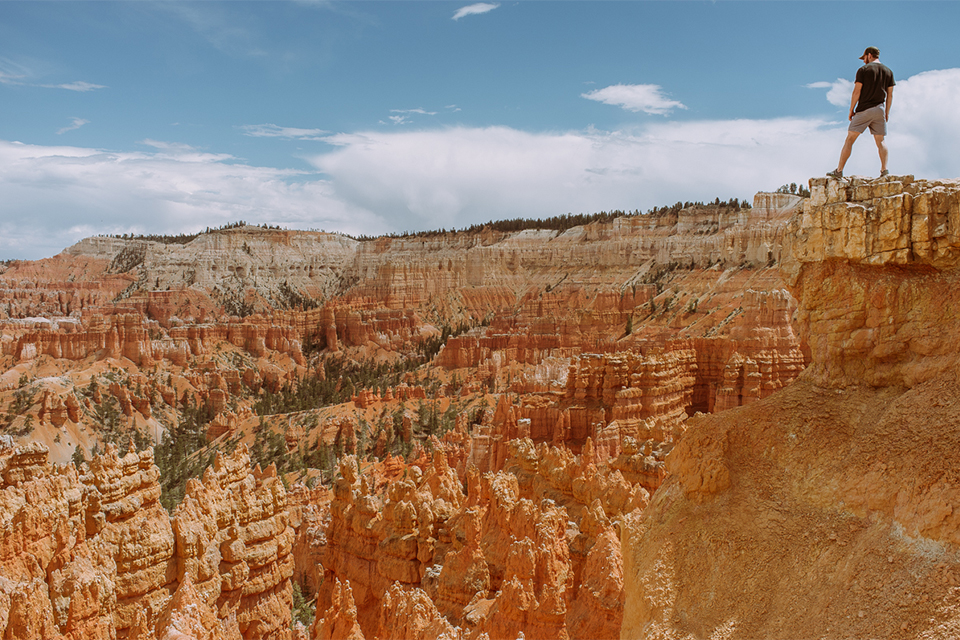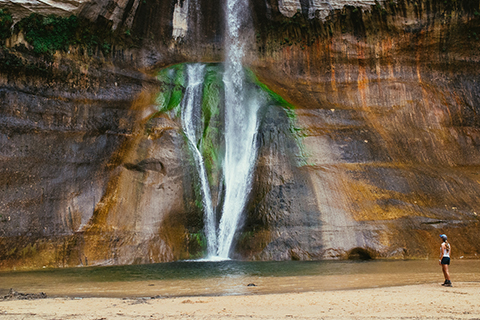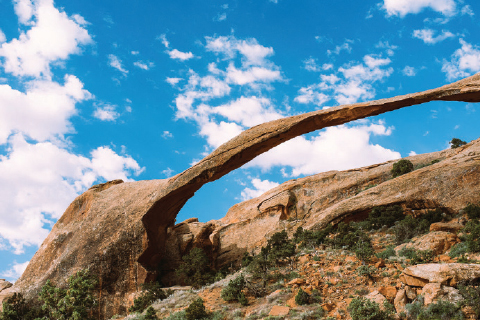Backpacking Basics

I was made to move. And despite all possible ailments and challenges, so were you. Now, I don’t mean the gym-dreading, hamster-in-a-wheel type of moving. I’m referring to the type of moving that encourages you to experience life and increase its quality. The getting-outside, building-relationships, National-Geographic-landscapes type of moving.
Deep down most of us want experiences. It was Joseph Campbell who said, "I don't believe people are looking for the meaning of life as much as they are looking for the experience of being alive." Often what we fear is the preparation, challenge, and implementation it takes to live out those experiences. Fitness levels, family demands, skills, money, and 9–5 jobs quickly squelch our wanderlust flame, and once again we find ourselves swiping our cards to head into the gym—no goal in sight beside keeping our waistband trim.
Let me preface this piece by saying that the gym is not a bad place; I am a strength and conditioning coach after all. But let’s distinguish the gym as a tool: a means to increase our quality of life outside its confines. Take a second to imagine a world where losing weight or bulking up wasn’t the apex of workout dreams, but rather a byproduct of a greater goal. What if at the end of the workout rainbow was an experience waiting to be had? What if you were stair-stepping yourself toward the summit of Half Dome in Yosemite or to the top of Angel’s Landing in Zion? What if your friends, your significant other, or your kids were there too? If this idea makes your heart beat a little faster, then keep reading.
The physical portion of hiking and backpacking can often be the most fear-inducing aspect of wilderness travel, whether you possess a foundation of fitness or not. For those who have never hiked anywhere, much less at a national park, I’m going to lay out how to make a first-ever hike or a consecutive day backpacking trip a reality for even the most novice of hikers.

PLANNING
1. Start dreaming. Pick a destination and a hike (or hikes).
Where have you always wanted to go? What kind of landscape piques your interests? Waterfalls, mountains, rock formations, caves? A quick search on the Internet or social media can provide endless destination inspiration. Browse online magazines, Web sites, hashtags, and outdoor accounts on Instagram and Twitter.
For me, it had been a dream to explore the national parks and lands of Utah. So in December 2014, plans for a multiday hiking trip for this May took root.
2. Find a fellow adventurer and workout accountability partner (it only takes one).
Shared experiences bond people for a lifetime. They end up being what we find most gratifying and lasting, yet we are so quick to lower them on the priority list. Part of what I love about travel and physical challenges is the lasting relationships they build, the cohesion in adversity and the excitement when you turn to each another at the end of a hike and know what the other is thinking—that was amazing.
When I approached four friends to join in my Utah vision, they jumped on the challenge. Together we dubbed it #TheSouthwestQuest (find the hashtag on Instagram).
3. Set your goal and determine the mileage and difficulty level of the hike(s).
What is your fitness baseline? Are you currently inactive wishing to summit, or can you run a 5K or 10K? What mileage and difficulty level is challenging but achievable?
The Southwest Quest crew consisted of active individuals all able to run a 10K. We all lifted two-plus days a week. Together, we decided on an adventure consisting of four treks ranging in difficulty levels from moderate to strenuous and lasting between 5 and 8.5 miles each.
4. Our journey.
Hike 1: Zion National Park — Angel’s Landing. This trek consisted of about 5 miles of strenuous hiking with steep inclines, drop-offs, and scrambling.
Hike 2: Bryce Canyon National Park — Queen’s Garden/Navajo/Peekaboo Figure 8. This trek consisted of about 8.5 miles of moderate to strenuous hiking.
Hike 3: Escalante Grand Staircase National Monument — Calf Creek Falls. This trek consisted of about 6 miles of moderate hiking.
Hike 4: Arches National Park — Devil’s Garden. This trek consisted of about 7 miles of strenuous hiking, with some scrambling.
*Total Mileage: about 26.5 miles
5. Save the Date
Pick a date you would like to summit. This will largely be based on your current level of fitness and what is realistic for your training and travel schedule. Make reservations and buy your plane ticket—two crucial steps of follow through.

PREPARE
Create and adhere to a training plan. Ask yourself the following:
What is required of me physically for the hike(s)? (Total mileage and difficulty level.)
What is my base of training? What areas do I already feel confident in? What areas need special focus?
How much time do I have to train?
Set aside a 60–90 minute time block 5–6 days a week to train. Use 3–4 days for conditioning and 2–3 days for a form of strength training.
When training, use the resources available to you. Do you have a gym membership? Access to a high school stadium’s stairs or track? A park or nearby trail? Use level and inclined surfaces, and gradually increase your distance and speed over time.
Conditioning for Beginners
Monday: Inclines (ramps, hills, stadium stairs, etc.)
Time/Distance: Consistent difficult pace for a total of 30 minutes (pace going up will differ from pace going down)
Wednesday: Intervals
Time/Distance: Extremely difficult pace for 1/4–1/2 mile. Then jog or walk half of the same distance to recover. Start with 2–3 miles of total work. Each session, decrease the interval times, then begin adding distance.
Friday: Long Run (on even trail surface or treadmill)
Time/Distance: Walk or jog at a steady, moderate pace for 30–60 minutes. Gradually increase distance and speed.
Saturday OR Sunday: Trail Walk or Bike Ride (with elevation changes; preferably uneven surfaces)
Time/Distance: This is active enjoyment outside. You pick the distance and time.
*In the last 1–2 months of training, try adding a backpack to your workout 2 days a week.
**Increase conditioning demands gradually to avoid injury.
Strength Training for Beginners
Strength training is drastically underemphasized in the world of hiking. Strength, and not simply endurance, is required to tackle a lengthy hike. Leg strength is imperative for taking dramatic steps up inclines; ankle stability is beneficial for tackling uneven surfaces; core, leg, and upper body strength is needed to carry a pack, as well as scramble and pull yourself up obstacles.
Pick 7 exercises per workout session:
- Plyometric: rope jumping, jumps, hops
- Lower body bilateral: back squat,
- goblet squat
- Push: push-up, dumbbell chest press, dumbbell incline press
- Pull: pull-up, inverted row, dumbbell row, lat pull-down
- Lower Body Unilateral: single leg squat, step-up, lunge variations, Bulgarian
- split squat
- Lower Back/Hamstring: glute ham raise, hyperextension, glute bridge
- Abdominal: plank variations, sit-up variations, leg raise variations
Sets Per muscle group: 2–4
Reps
Tuesday: 8-10
Thursday: 5-7
Saturday: 12-15
Once you are confident in form and in control, the last 2-3 reps of each set should be extremely challenging to create a training adaptation. Many make the mistake of choosing weights that are too light. Varying your exercises after 4-6 weeks is crucial to improving.
PAYOFF
A picture is worth a thousand words. Decide for yourself if the preparation is worth the payoff.






